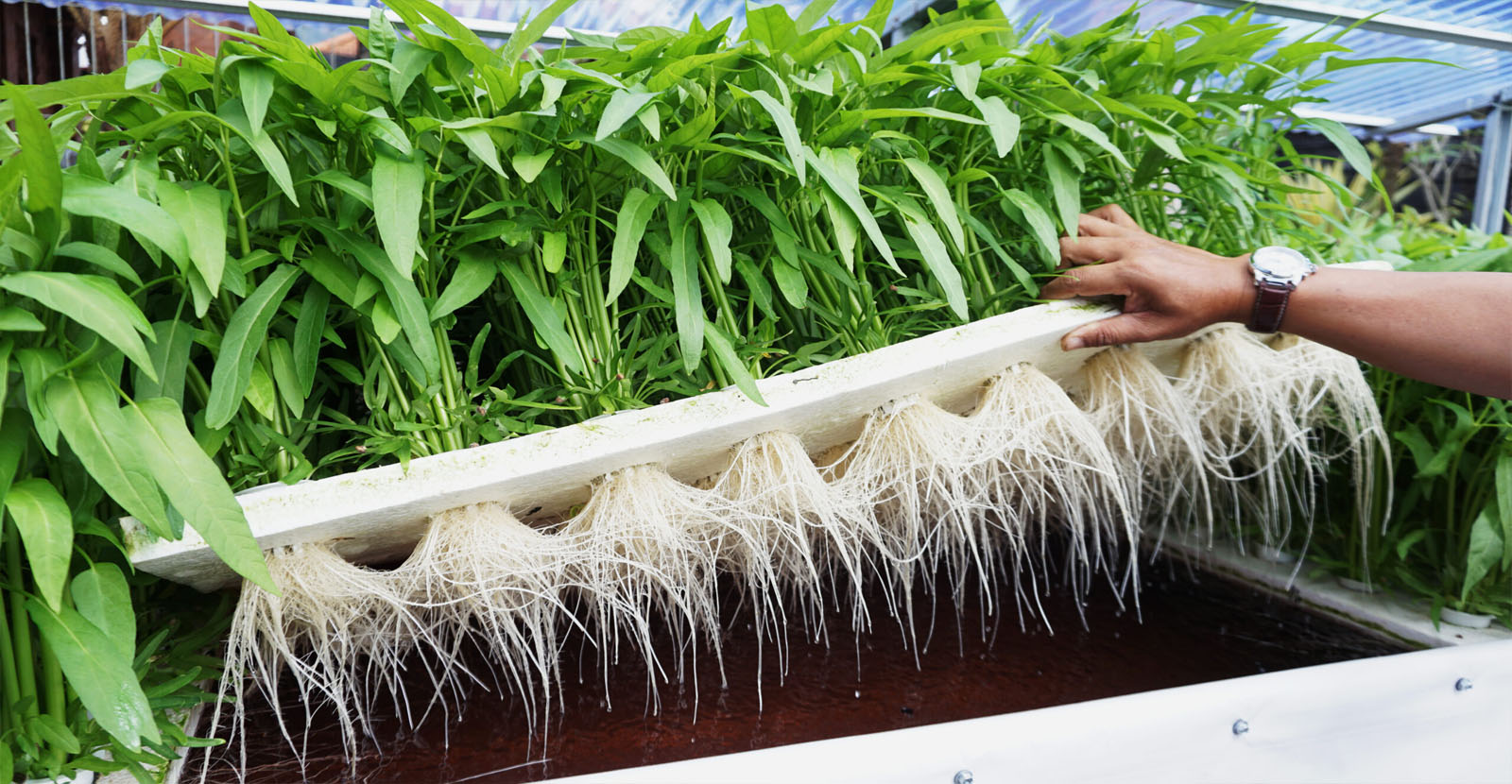Aquaponics
aquaponics, system of agriculture that combines aquaculture and hydroponics to cultivate both plants and aquatic animals. Aquaponics setups cycle nutrients through a closed circuit of bacteria, fish, and crop plants. The system uses nitrifying bacteria to convert fish waste into nitrates for plants, which in turn purify the water for the fish. History
Aquaponics systems rely on the interplay between fish, plants, and bacteria. The system imitates the natural cycles of aquatic ecosystems and their nutrient exchanges, albeit in a simplified form. A common aquaponics setup houses fish in a tank that is connected to crop beds through a pump. The pH value of the water in the system must be in the neutral range, between about 6.8 and 7.2. At improper pH values, the fish face the risk of death, and the plants cannot successfully integrate nutrients. Common varieties of fish used for freshwater aquaponics include carp, catfish, and tilapia. The fish consume feed, which contains nitrogen, and excrete waste that is rich in the chemical compound ammonia. Water from the fish tank, which is laden with waste matter, ammonia, and uneaten fish feed, flows into biofiltration structures containing nitrifying bacteria. Often, the biofilters are incorporated directly into the media used to grow the plants, though some setups rely on additional pumps and filters. Various kinds of nitrifying bacteria convert the ammonia into nitrite and then into nitrate, the form of nitrogen that plants can consume, and thus the water nourishes the crops.
The newly nitrate-rich water travels to the soilless plant beds, which can take a number of forms depending on the plants and the size of the setup. Small leafy vegetables such as lettuce, spinach, and kale lend themselves well to aquaponics, as do many herbs. In the popular deep water culture or raft system of aquaponics, a thin buoyant sheet sits across a tank of water, and plants stretch their roots through the material. This method involves constant circulation of the water between the fish tank and the separate plant chambers. Other arrangements, such as ebb and flow systems, vary the amount of water available at a time and provide different substrates on which the plants can anchor themselves. In all setups, as water flows through the channel, plants absorb nitrate as fertilizer, and the purified water travels back to the fish tank. Because of this cyclical design, an aquaponics system reuses between 95 and 99 percent of the water it initially receives, with small losses occurring as a result of evaporation from the tanks and transpiration by the plants.

